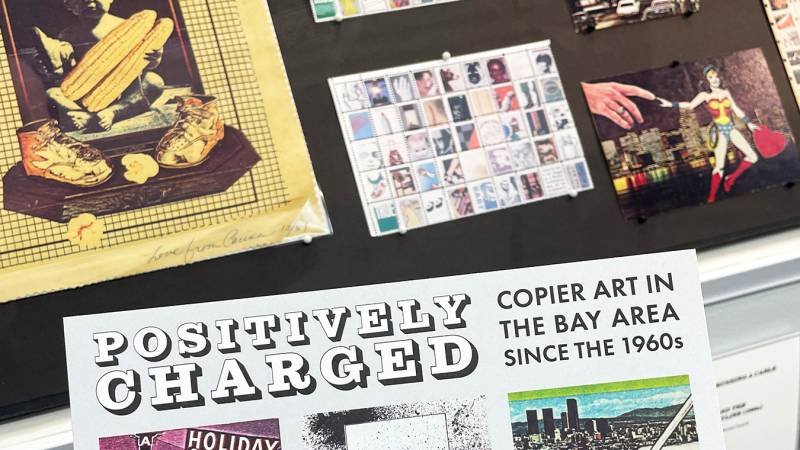The humble copy machine was meant to revolutionize office work. But when the Xerox 6500 color copier was introduced in 1973, its ability to print in saturated colors on plain paper jump started an avant garde Bay Area art movement. Copy machines offered artists a chance to play with color, form and image as copies were made of copies and the piece changed form. The copier also democratized art by making prints cheap and easily available. We’ll talk with the curators and artists featured in “Positively Charged,” a new art exhibit that looks at the evolution of copy art and zines in the Bay Area. Have you ever created art on a copy machine?
How the Xerox Machine Launched A Bay Area Art Movement

The gallery at San Francisco Center for the Book.
Guests:
Maymanah Farhat, writer; editor; curator, "Positively Charged: Copier Art in the Bay Area Since the 1960s"<br />
Jennie Hinchcliff, curator, "Positively Charged: Copier Art in the Bay Area Since the 1960s"; exhibitions and events manager, San Francisco Center for the Book<br />
Enrique Chagoya, professor of art practice, Stanford University. Chagoya's work is featured in the exhibit "Positively Charged."<br />
Sally Wassink, artist. Wassink's work is featured in the exhibit "Positively Charged."<br />
Sponsored